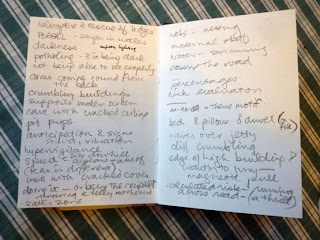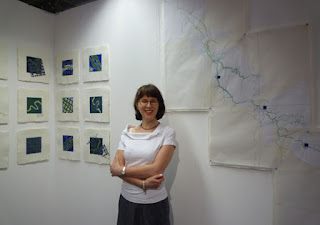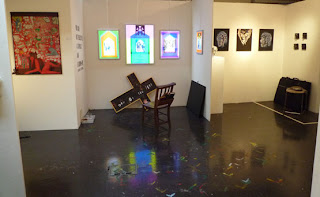 One of a collection of "danger signs" from this site.
One of a collection of "danger signs" from this site.It segues from my work with stairs and steps into the next area of interest - safety/danger, and the tipping point between them. I'm writing a research proposal to apply for an MA course.
The research proposal requires spelling out your methodology - how are you going to investigate the topic, with a view to turning it into a piece of art? So far, I've asked people what they think of when they hear the words safety and danger - such interesting replies!

 And so many - how to pare these down, to shape the proposal...
And so many - how to pare these down, to shape the proposal...Something you can't say in the proposal is "I will use coincidence" - but that's what often ends up being crucial - a happy accident sends you down another path. Recently I edited an article that mentioned a talk by a former editor of the BMJ, Richard Smith. He was talking about predictability - some things cannot be foreseen or predicted. That sort of unexpectedness fits with my initial idea of the sudden change of state from safe to dangerous - the perception of "hang on, this is getting a bit tricky; I want to get out of this situation". So that's a possible area of investigation.
Interestingly, it was Richard who banned the use of the word "accident" in the journal - we had to replace it with incident or a similar word. Ah the power of the editor! This diktat sent us jumping through silly hoops - road accidents (an easily understood concept) became road crashes, as though a pedestrian might crash with a vehicle...
For me, it's in an accident that the sudden change of state happens - one moment you're safe, in an instant you're in danger.
One way of investigating that is to look at accident statistics - what's most common, where does it happen, to whom - where is the greatest danger? And how are those statistics used to influence our perception of danger? So that's another aspect of methodology -- but keep in mind this will have a visual outcome, not an academic one.
Another aspect of the topic, allied to accidents, is warnings -- love those "danger signs"!
This one
 is full of potential...
is full of potential...













































